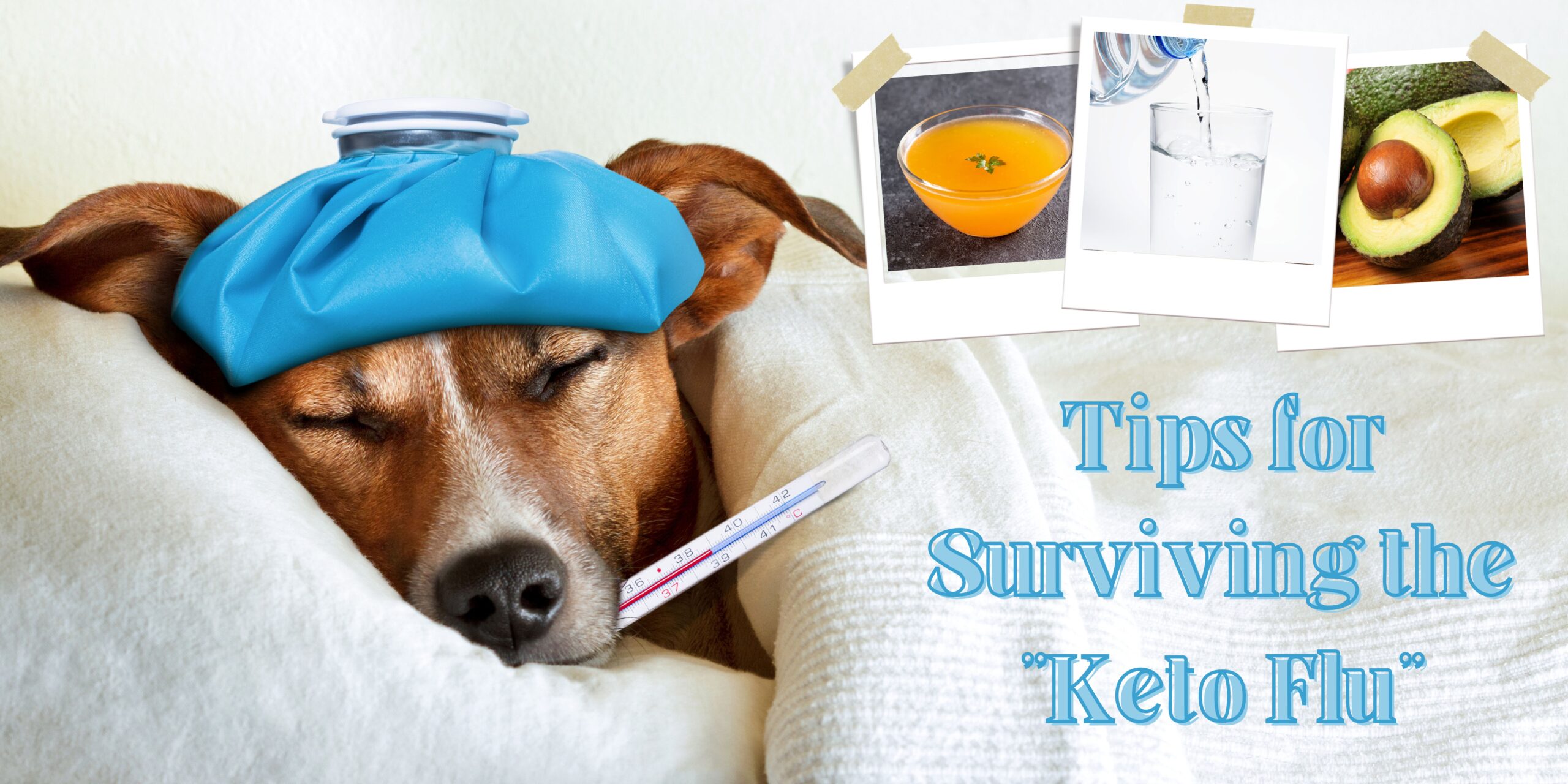If you’ve read my recent article on the differences between low carb and keto diets, you may have decided that a keto diet is the right choice for you. Congratulations! The keto diet has been shown to have many potential health benefits, from weight loss to improved blood sugar control. However, like any diet or significant change to your body, there may be some side effects to be aware of. In this post, I’ll explore one of the most common side effects of the keto diet: keto flu. Keep reading to learn what it is, why it happens, and how to avoid it.
What is keto flu?
Keto flu is a collection of symptoms that can occur when you first start a ketogenic diet. These symptoms can include headache, fatigue, nausea, dizziness, and irritability. While not everyone experiences keto flu, it can be a frustrating obstacle for those who do.
As hard as it may be, don’t give up here!
These symptoms are usually temporary and can be managed with the right strategies. It’s important to remember that the benefits of the keto diet can be significant and long-lasting, and many not need to be dismissed based on temporary discomfort. By sticking to the diet and implementing strategies to manage symptoms, people can successfully transition to ketosis and start experiencing the many benefits of the diet.
It’s also worth noting that not everyone will experience keto flu, and the severity and duration of symptoms can vary from person to person. So, if you do start feeling unwell during the transition period, don’t be discouraged.
Why does Keto Flu Happen?
Keto flu happens because your body is transitioning from using glucose (sugar) as its primary source of energy to using ketones (fat) instead. When you drastically reduce your carbohydrate intake, your body may experience a temporary shortage of glucose, which can cause some of the symptoms associated with keto flu. Additionally, when your body starts to burn fat for fuel, it releases ketones into your bloodstream. This can cause an imbalance in your electrolytes, which can lead to symptoms like fatigue, nausea, and dizziness. One of the reasons for these symptoms is that carbohydrates allow your body to retain water. When you reduce your carb intake, your body begins to flush out excess water along with electrolytes. This can cause dehydration and electrolyte imbalances, which can lead to the keto flu symptoms.
What Can You Do to Avoid Keto Flu?
While keto flu can be uncomfortable, there are steps you can take to avoid or minimize its effects. Here are some tips:
-
- Stay hydrated. Drinking plenty of water and staying hydrated can help flush out toxins and balance your electrolytes. Dehydration can exacerbate keto flu symptoms, so make sure to drink plenty of water throughout the day.
- Get enough electrolytes. As your body adjusts to the new diet, it’s important to make sure you’re getting enough electrolytes like sodium, potassium, and magnesium. You can do this by incorporating electrolyte supplements into your daily routine and/or consuming foods that are rich in these minerals, such as avocado, nuts, leafy greens, and bone broth.
- Increase your fat intake. Increasing your fat intake is a critical aspect of the keto diet because it helps you transition into a state of ketosis much more smoothly. Since ketosis is the metabolic state in which your body burns fat for fuel instead of glucose, it’s essential to increase your healthy fat intake while limiting your carb intake. Healthy fats provide a slow and steady source of energy, which can help stabilize blood sugar levels and prevent energy crashes as well. Additionally, fats are more satiating than carbs, which means that they can help you feel full and satisfied for longer periods. This can make it easier to stick to the keto diet and prevent overeating.Keep in mind that while increasing your fat intake is essential for the keto diet, it’s also crucial to eat vegetable. To promote overall health it’s important to focus on consuming healthy fats found in foods like nuts, seeds, avocado, olive oil, fatty fish, and grass-fed beef, as well as nutrient-dense vegetables. Vegetables are an excellent source of fiber, vitamins, and minerals, which are important for maintaining good health. By including vegetables in your meals, you can ensure that you’re getting a wide range of nutrients to support your overall health while still being able to maintain ketosis.
- Gradually reduce your carb intake. Instead of drastically cutting carbs, try reducing them slowly over a few days. When you switch to a low-carb, high-fat diet, your body needs to adapt to burning fat instead of glucose for energy. Gradually reducing your carb intake could be a helpful way to avoid the keto flu because it gives your body time to adjust to the changes.It’s worth noting that gradually reducing your carb intake may not be necessary for everyone. If you’re already staying hydrated, replenishing your electrolytes, and consuming enough healthy fats, you may not experience the keto flu, even if you drastically cut your carb intake. However, if you’re new to the keto diet or have been experiencing symptoms of the keto flu, gradually reducing your carb intake can be a helpful way to ease into the diet and minimize unpleasant symptoms. One of the best ways to reduce your carb intake is by giving up excess sugars found in things like soda, candy bars, processed foods, and other sugary snacks. By cutting back on these types of foods, you can reduce your carb intake and support your body’s transition into ketosis.
- Rest and recover. Listen to your body and rest when you need to. It’s common to feel fatigued during the transition to a state of ketosis, so make sure you’re giving yourself time to recover. Lack of sleep can also make the symptoms worse, so it’s vital you get enough sleep each night.
While the keto flu can be an unpleasant experience, it is a temporary side effect that should not deter you from the many potential benefits. By understanding what keto flu is and how to manage it, you can successfully transition to ketosis and start experiencing improved energy levels, better mental clarity and weight loss.
Remember, the keto diet can be a powerful tool for improving your health and well-being, but it’s important to approach it safely and with a solid understanding of the potential side effects. Everyone’s experience with the keto diet is different, so it’s important to listen to your body and seek guidance from a healthcare professional if needed.
Additional Support & Guidance
If you’re considering starting the keto diet and want guidance on how to best avoid keto flu, or if you’re currently experiencing symptoms and need support, don’t hesitate to seek guidance from a healthcare professional. But, as someone who has experienced the benefits of the keto diet firsthand, I’m also here to offer additional support and advice. Whether you have questions about meal planning, need motivation to stick to the diet, or just want to connect with others who are on a similar journey, I’m here to help. By getting the right support and guidance, you can successfully transition to ketosis and start experiencing the many benefits of this transformative diet. So don’t be afraid to ask for help – I’m here to support you on your keto journey!
With patience, persistence, and the right strategies in place, you can successfully navigate the transition period and reap the many rewards of this powerful diet. So don’t give up – the benefits of the keto diet are waiting for you!







Leave A Comment